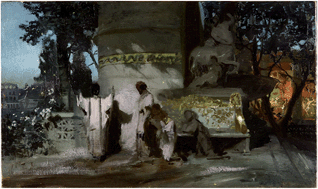The use of XRPD for the investigation of historic pigments and painting materials in works by Henryk Siemiradzki
Abstract
Precise knowledge of the chemical composition of the pigments used by Henryk Siemiradzki, one of the greatest Polish artists, is important for the enrichment of knowledge concerning his workshop and is essential in choosing the right strategies for the conservation and preservation of his works. An examination of powdered pigments inherited from Siemiradzki, along with an examination of samples taken from his paintings, was part of a research project carried out in the National Museum in Krakow. The aim of the project is to identify the artist's painting methods and the palette he used. The X-ray powder diffraction (XRPD) technique, along with other methods of examination, supplemented non-invasive XRF spectroscopy, the starting point of the analyses. None of the applied methods identifies pigments as unequivocally as XRPD analysis, provided the studied material is crystalline. In this article we will present the results of the application of XRPD to investigations of powdered pigments from the collection of historic pigments inherited from Henryk Siemiradzki. We will also present the results of XRPD investigations of paint from several of Siemiradzki's paintings.

- This article is part of the themed collection: Synchrotron radiation and neutrons in art and archaeology

 Please wait while we load your content...
Please wait while we load your content...